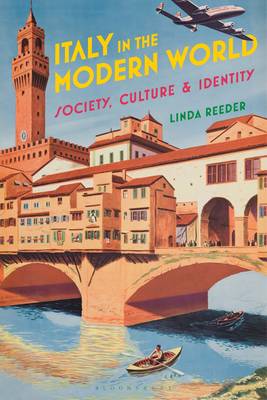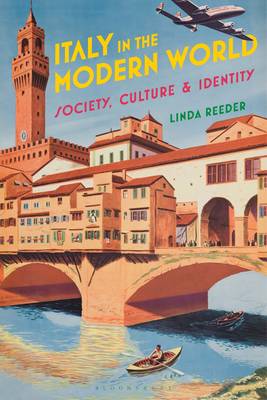
Je cadeautjes zeker op tijd in huis hebben voor de feestdagen? Kom langs in onze winkels en vind het perfecte geschenk!
- Afhalen na 1 uur in een winkel met voorraad
- Gratis thuislevering in België vanaf € 30
- Ruim aanbod met 7 miljoen producten
Je cadeautjes zeker op tijd in huis hebben voor de feestdagen? Kom langs in onze winkels en vind het perfecte geschenk!
- Afhalen na 1 uur in een winkel met voorraad
- Gratis thuislevering in België vanaf € 30
- Ruim aanbod met 7 miljoen producten
Zoeken
Italy in the Modern World Society, Culture and Identity
Society, Culture and Identity
Linda Reeder
Hardcover | Engels
€ 203,95
+ 407 punten
Omschrijving
Providing a comprehensive history of Italy from around 1800 to the present, Italy in the Modern World traces the social and cultural transformations that defined the lives of Italians during the 19th and 20th century. The book focuses on how social relations (class, gender and race), science and the arts shaped the political processes of unification, state building, fascism and the postwar world.
Split up into four parts covering the making of Italy, the liberal state, war and fascism, and the republic, the text draws on secondary literature and primary sources in order to synthesize current historiographical debates and provide primary documents for classroom use. There are individual chapters on key topics, such as unification, Italians in the world, Italy in the world, science and the arts, fascism, the World Wars, the Cold War, and Italy in the 21st century, as well as a wealth of useful features for students, including:
* Comprehensive bibliographic essays covering each of the four parts.
* 23 images and 12 maps
Italy in the Modern World also firmly places both the nation and its people in a wider global context through a distinctly transnational approach. It is essential reading for all students of modern Italian history.
Split up into four parts covering the making of Italy, the liberal state, war and fascism, and the republic, the text draws on secondary literature and primary sources in order to synthesize current historiographical debates and provide primary documents for classroom use. There are individual chapters on key topics, such as unification, Italians in the world, Italy in the world, science and the arts, fascism, the World Wars, the Cold War, and Italy in the 21st century, as well as a wealth of useful features for students, including:
* Comprehensive bibliographic essays covering each of the four parts.
* 23 images and 12 maps
Italy in the Modern World also firmly places both the nation and its people in a wider global context through a distinctly transnational approach. It is essential reading for all students of modern Italian history.
Specificaties
Betrokkenen
- Auteur(s):
- Uitgeverij:
Inhoud
- Aantal bladzijden:
- 344
- Taal:
- Engels
Eigenschappen
- Productcode (EAN):
- 9781350005181
- Verschijningsdatum:
- 12/12/2019
- Uitvoering:
- Hardcover
- Formaat:
- Genaaid
- Afmetingen:
- 156 mm x 234 mm
- Gewicht:
- 657 g

Alleen bij Standaard Boekhandel
+ 407 punten op je klantenkaart van Standaard Boekhandel
Beoordelingen
We publiceren alleen reviews die voldoen aan de voorwaarden voor reviews. Bekijk onze voorwaarden voor reviews.









